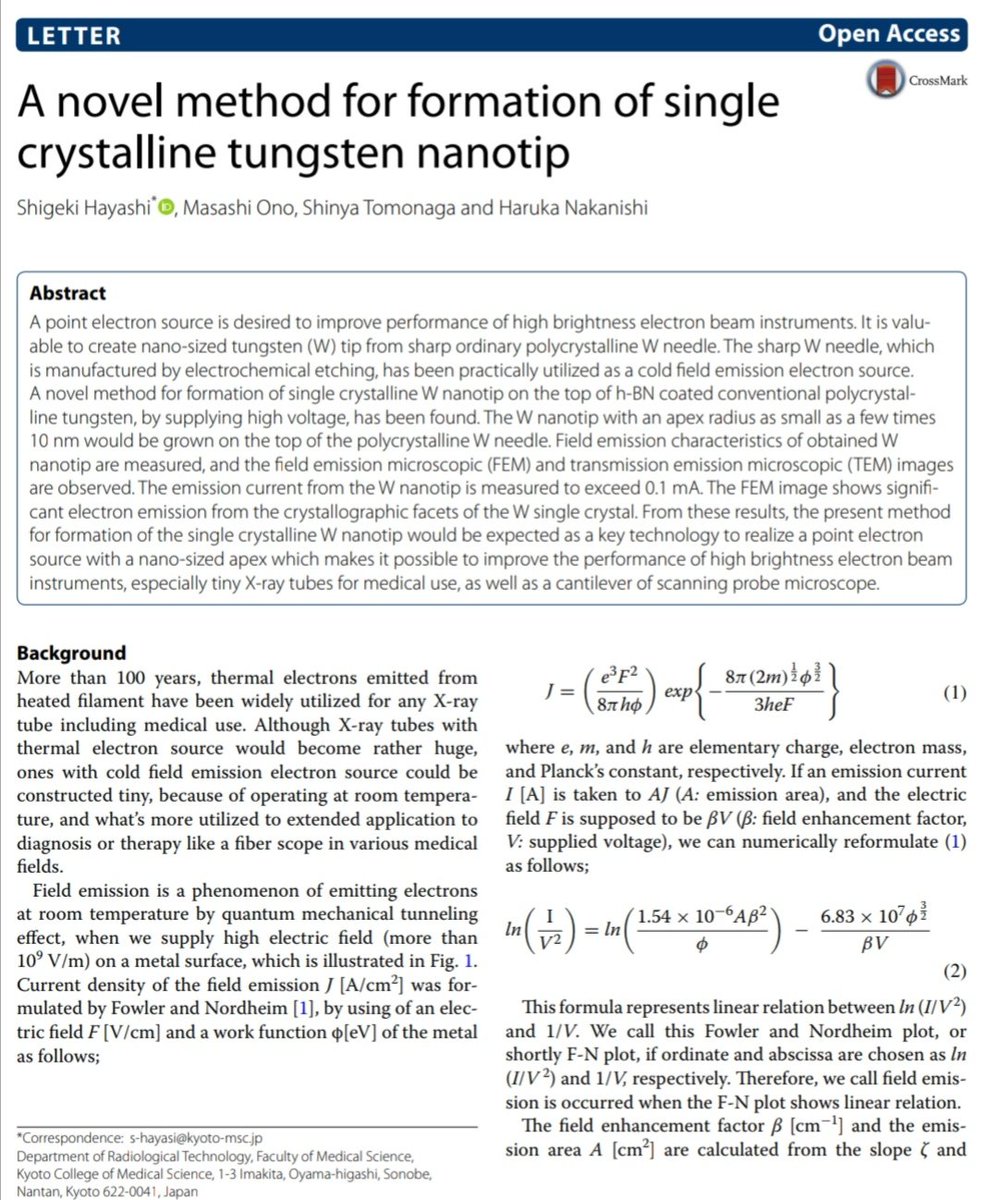How do you create the sharpest thing in the world? And why would you do it?
In this thread we take a voyage into true sharpness...
In this thread we take a voyage into true sharpness...

We've all at some point wielded something that is truly sharp. You give it respect, because it's dangerous, but it's also magical, a parer of reality. There's a subtle, definite power to a scalpel.
But we can do better than that...
But we can do better than that...

An obsidian blade can be encouraged to chip along the lines of it's own molecular lattice, creating a molecular sharpness down to 3 nanometres thickness that no steel can match. It's delicate, prone to chipping and blunting, but obsidian scalpels exist. 

That said, obsidian scalpels are seldom licensed for use on humans because of their delicacy. Nonetheless, their sharpness on a microstructure level shames a steel scalpel.
But we can do better than that...
But we can do better than that...

Introducing the Tungsten Nano-needle: The sharpest thing on the planet. Produced by electrolytic etching, it can get down to tip thickness below a few nanometres (nm): You can fit 1 million nm into a mm, and 25 million nanometres into an inch.
But we can get sharper...
But we can get sharper...

A tungsten wire is placed into a tungsten wire loop in a concentrated potassium hydroxide solution. Electrolytic etching acts most aggressively just beneath the eldctrolyte surface, so a "necking" region develops, eventually splitting the wire in two. The lower half is discarded.




Additional pulse etching is applied to the remaining half: The necked geometry influences electric field concentration and etch rate and a characteristic conical taper is formed. The shape, radius of tip curvature & taper angle is defined by pulse duration, count & voltage. 

In 2006, the National Institute for Nanotechnology ' the University of Alberta set an unbeatable record: A tungsten Nano-needle tapering to a tip thickness of just one atom.
The sharpest object in the world.
The sharpest object in the world.

Why would you do this? Well for one you can use the concentrating effect of nanoneedle geometry as a point electron source for electron microscopes: Literally using something very small to see things that are very small.




But you don't just have to etch nanoneedles: You can also use chemical vapour deposition. This is a far more industrially scalable method for producing lots of them.
Here's CVD grown tungsten oxide nanoneedle in an experimental gas sensor, for example.
Here's CVD grown tungsten oxide nanoneedle in an experimental gas sensor, for example.

You can also use this technique to produce carbon nanotubes: A 1nm wide graphene cylinder. These have remarkable properties: Thermal conductivity exceeding diamond, high surface area for uses as a catalyst and the highest tensile strength of any material.




This barely scrapes the surface, but there you go: The story of the world's sharpest thing, some of the world's smallest structures and a nascent industry of developing materials technology.
I hope you enjoyed this!
I hope you enjoyed this!

Some free downloadable papers used are shown here, showing some different methods of creating carbon & tungsten Nano-needle structures.








• • •
Missing some Tweet in this thread? You can try to
force a refresh

























